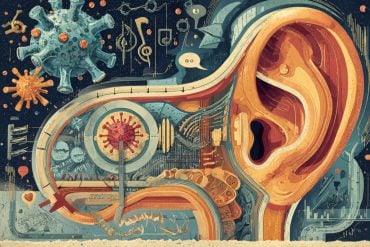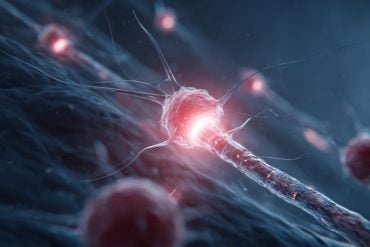Summary: Neural crest stem cells, a rare type found in skin and other tissues, are uniquely capable of reprogramming into different cell types, challenging the prevailing belief that any mature cell can be reprogrammed. The study reveals that cellular reprogramming is likely limited to these specialized stem cells rather than all mature cells.
Neural crest stem cells are present in skin, bone, and connective tissue, with a natural predisposition for transformation due to their origin in embryonic development. This finding could reshape strategies for stem cell therapies, emphasizing the role of neural crest cells in treating neurodegenerative diseases. The team hopes their work will refine cell reprogramming approaches and inspire further research into the specific potentials of stem cell types.
Key Facts
- Neural crest stem cells, not all mature cells, can reprogram into multiple types.
- These stem cells are rare, yet found throughout skin, bone, and connective tissue.
- Reprogramming potential may depend on stem cell origins within embryonic layers.
Source: University of Toronto
A team led by researchers at the University of Toronto has discovered that a group of cells located in the skin and other areas of the body, called neural crest stem cells, are the source of reprogrammed neurons found by other researchers.
Their findings refute the popular theory in cellular reprogramming that any developed cell can be induced to switch its identity to a completely unrelated cell type through the infusion of transcription factors. The team proposes an alternative theory: there is one rare stem cell type that is unique in its ability to be reprogrammed into different types of cells.

“We believed that most cases of cell reprogramming could be attributed to a rare, multi-potential stem cell that is found throughout the body and lays dormant within populations of mature cells,” said Justin Belair-Hickey, first author on the study and graduate student of U of T’s Donnelly Centre for Cellular and Biomolecular Research.
“It was not fully understood why reprogramming tends to be an inefficient process. Our data explain this inefficiency by demonstrating that the neural crest stem cell is one of the few stem cells that can produce the desired reprogrammed cell type.”
The study was published recently in the journal Stem Cell Reports.
Neural crest cells, which can be found below the hair follicle in the skin, are genetically predisposed to develop into neurons. This is not unexpected, as many cell types in the skin originate from the same location in the embryo as neurons: the ectodermal germ layer. The ectoderm is the outermost of the three layers of cells that form during embryonic development.
The team was driven to conduct this study through their own questioning of how experimental data from cellular reprogramming research is interpreted in terms of how flexible the identity of a cell is.
This includes theories of how mature cells from one embryonic layer can be directly reprogrammed to mature cells of another embryonic layer, even though the three germ layers are separated by different developmental histories.
They hypothesized that cellular reprogramming can only occur from a stem cell to a mature cell, where both come from the same germ layer.
“I think claims about direct reprogramming are either overstated or based on inaccurate interpretations of the data,” said Belair-Hickey.
“We set out to demonstrate that the identity of a cell is much more defined and stable than the field of cellular reprogramming has proposed. At first glance, it appears that we’ve found skin cells that can be reprogrammed into neurons, but what we’ve actually found are stem cells in the skin that are derived from the brain.”
Neural crest stem cells are found throughout the body, including in skin, bone and connective tissue. Their distribution throughout the body, ability to be reprogrammed into many types of cells and accessibility within the skin for collection makes them a high-potential candidate for stem cell transplantation to treat disease.
“Neural crest stem cells may have gone unnoticed by others studying cell reprogramming because, while they are widespread throughout the body, they are also rare,” said Derek van der Kooy, principal investigator on the study and professor of molecular genetics at the Donnelly Centre and U of T’s Temerty Faculty of Medicine.
“As such, they may have been mistaken for mature cells of various types of tissue that could be reprogrammed into other cell types. I think what we’ve found is a unique group of stem cells that can be studied to understand the true potential of cell reprogramming.”
Funding: This research was supported by the Canadian Institutes of Health Research, the Krembil Foundation and Medicine by Design.
About this genetics research news
Author: Anika Hazra
Source: University of Toronto
Contact: Anika Hazra – University of Toronto
Image: The image is credited to Neuroscience News
Original Research: Open access.
“Neural crest precursors from the skin are the primary source of directly reprogrammed neurons” by Derek van der Kooy et al. StemCell Reports
Abstract
Neural crest precursors from the skin are the primary source of directly reprogrammed neurons
Direct reprogramming involves the conversion of differentiated cell types without returning to an earlier developmental state.
Here, we explore how heterogeneity in developmental lineage and maturity of the starting cell population contributes to direct reprogramming using the conversion of murine fibroblasts into neurons.
Our hypothesis is that a single lineage of cells contributes to most reprogramming and that a rare elite precursor with intrinsic bias is the source of reprogrammed neurons.
We find that nearly all reprogrammed neurons are derived from the neural crest (NC) lineage. Moreover, when rare proliferating NC precursors are selectively ablated, there is a large reduction in the number of reprogrammed neurons.
Previous interpretations of this paradigm are that it demonstrates a cell fate conversion across embryonic germ layers (mesoderm to ectoderm).
Our interpretation is that this is actually directed differentiation of a neural lineage stem cell in the skin that has intrinsic bias to produce neuronal progeny.






